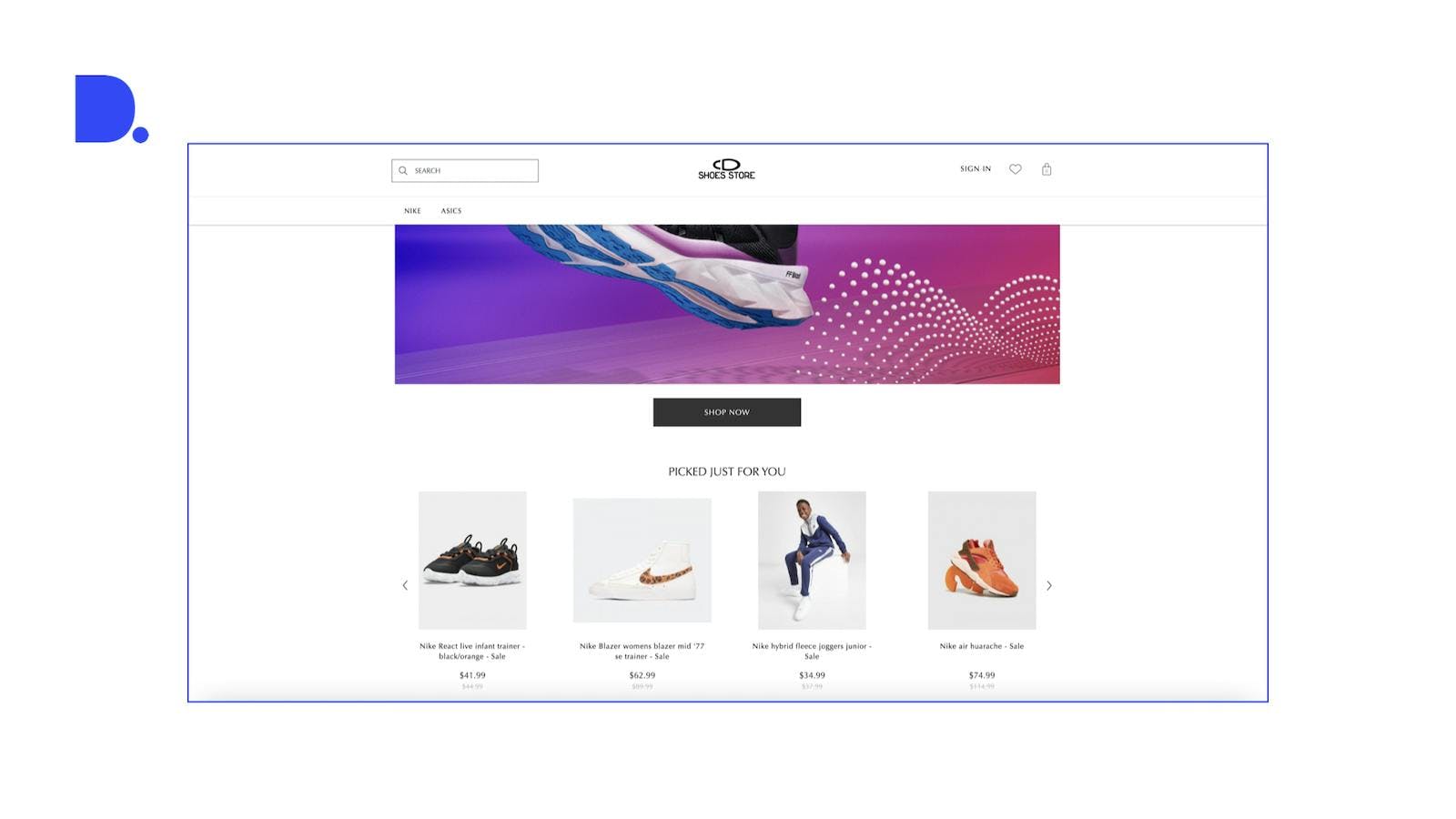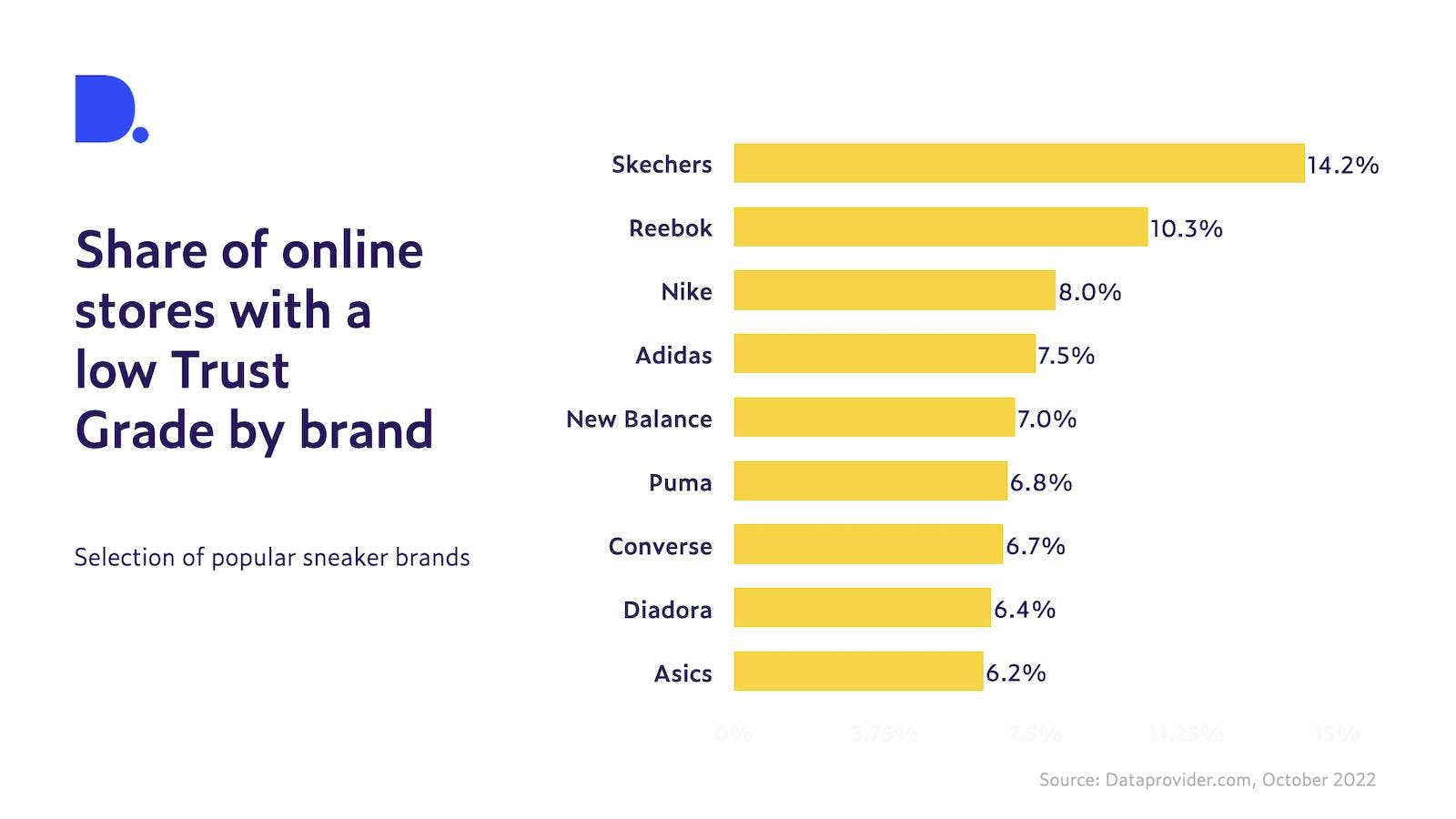Fake online stores: which sneaker brand do they favor?
- over 2 years ago
- 3 min read
A problem that virtually each popular brand will face at some point is counterfeiting. In this post we’re going to look at a specific way of counterfeiting: online stores that are created to only sell counterfeit goods.
At Dataprovider.com we came across this phenomenon years ago. At first sight, these websites look like ordinary online stores. But a closer look reveals that there are a number of attributes that are off most of the time.
First, there’s no phone number on the website, just an email form. This is a huge red flag. Most reliable online stores try to make it as easy as possible for prospective customers to contact them in different ways.
Second, the domain name doesn’t make sense: this is because counterfeiters use domains that previously had a website but for some reason the website owner decided not to renew their domain name, so it expired. But in many cases other websites still have a link to it. For example, a website about the history of New York City might have a link from another website that has an article about New York City. This link still exists even after the website about New York isn’t active anymore, so people are clicking on it. A widely used tactic among infringers is to find and register domains that aren’t renewed. Going back to our example, the people who read the article about New York City and click on it will now visit an infringing website and might be tempted to buy something there.
Third, steep discounts without a good reason (for example, an end of a season sale) can also be indicative of scam websites. If it's too good to be true, then often that is indeed the case.
Fourth, websites that use a free SSL certificate can give a false sense of security. As SSL is available at no charge, we’ve seen an enormous increase in the number of websites that are using itL. But SSL is no guarantee that you’re on a legitimate website.

Because this kind of crime only pays off if it’s done on a large scale and in a partly automated way, we see that counterfeiters use specific templates. These are predesigned layouts that enable the website owner to easily fill in and arrange content on a site. This makes it much easier to roll out such a scam on a large scale and also easier for us to identify these sites and even to reveal whole networks exploited by the same owner.
The infringing websites are hard to recognize at first sight but with a bit of practice it’s actually quite easy, they all work very similarly. Because we index the whole web, it’s possible to make a classifier to recognize them. Our proprietary Trust Grade ranges from A to F: A being the highest grade and F the lowest. Brands and brand protection companies frequently use the Trust Grade to find infringing sites and make sure they are taken offline.
We thought it would be interesting to analyze what brands are the most recurrent victims of infringement. For this analysis we looked into nine popular sport and sneaker brands: Adidas, Asics, Converse, Diadora, New Balance, Nike, Puma, Reebok and Skechers. We first looked at the number of online stores that sell any of these brands and then at how many of them were classified into a Trust Grade of E or F.

Looking at the percentages, Skechers and Reebok were the top two brands with a 14% and 10% share of online stores with infringing content. And while Nike (∼30k) and Adidas (∼27k) are by far the largest brands among the ones we’ve examined, only around 8% of stores featuring these brands receive a low Trust Grade. In our analysis, Asics was the brand with the lowest share of untrustworthy eCommerce sites (6%).
Sneaker brands are a popular target for counterfeit criminals. Unfortunately, each famous brand has this problem. Looking at our data, we see that some brands are better at protecting their name than others. Technology makes it possible to find brand infringing networks and take them out, but the bad news is they easily pop back up so it is a continuous problem that requires rigorous monitoring. It will be hard to eradicate this problem entirely.